Advantech MIC-730AI Textile / OCR Demo with Smasoft
When we decided to do this review, one of the big questions I had was the “so what?” We normally have a performance section, but with CPU performance more akin to a Xeon E3-1240 that seemed less exciting. A 30W passively cooled system is never going to reach the levels of raw performance of 280W CPUs and 500W+ GPUs that we have today. So as a result, we managed to turn the STH studio into a textile inspection factory.
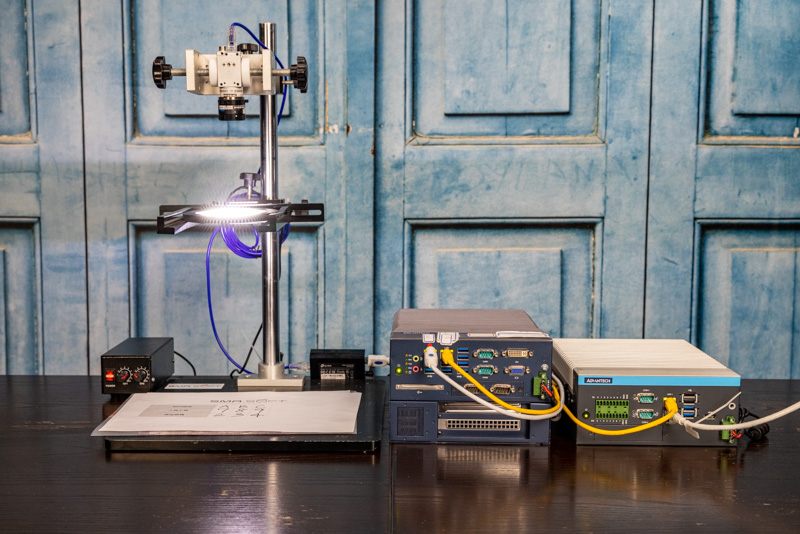
Here is the overall setup. Just a quick thank you to the Advantech and Smasoft folks for helping with this. I felt that I wanted to show off what a solution looks like and they certainly helped make it happen.
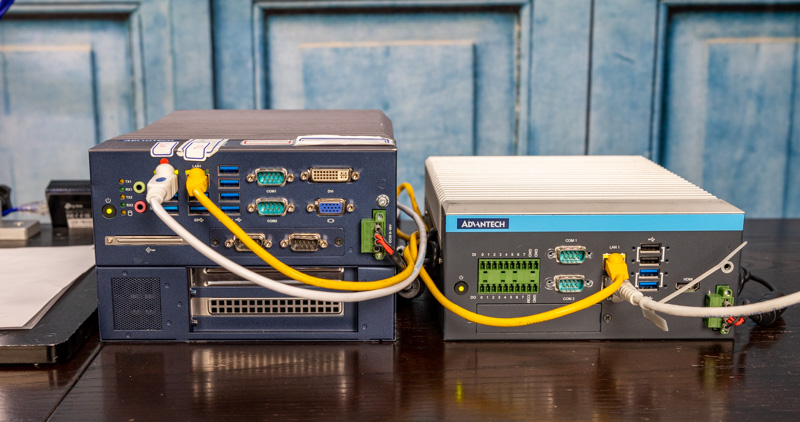
You will quickly notice we have not one, but two Advantech units. Alongside this MIC-730AI NVIDIA Jetson-based unit, we had an Advantech MIC-7700 Intel-based solution running Windows and the Smasoft software. We will just note that the MIC-7700 was quite loud and used fans, so these are different classes of embedded systems. The basic idea is that the Advantech MIC-730AI to x86 box does not need to be a 1:1 ratio. Instead of adding expensive and power-hungry GPUs to every system, one can use and scale with the Jetson-based solutions.
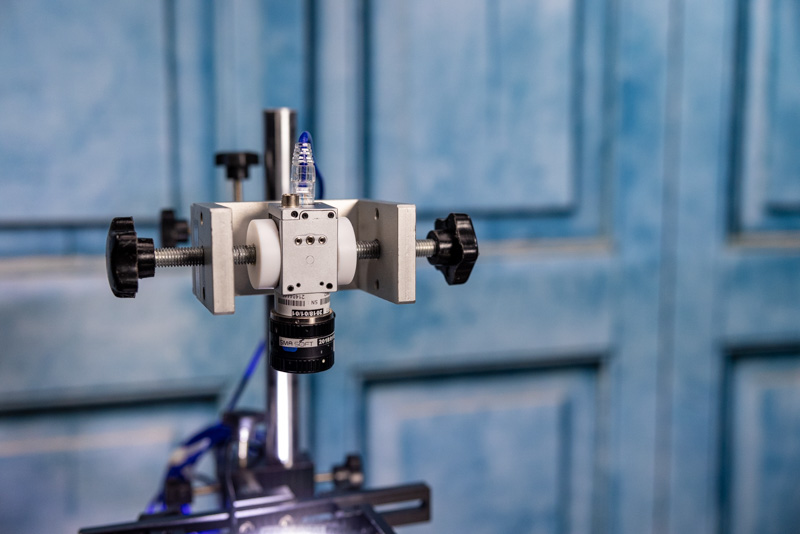
Next, we have the camera. The camera is a PoE industrial camera that is held in a fixed position on a stand. There are a number of ways to get power, and Advantech has PoE solutions as well, but here we have a simple PoE injector.
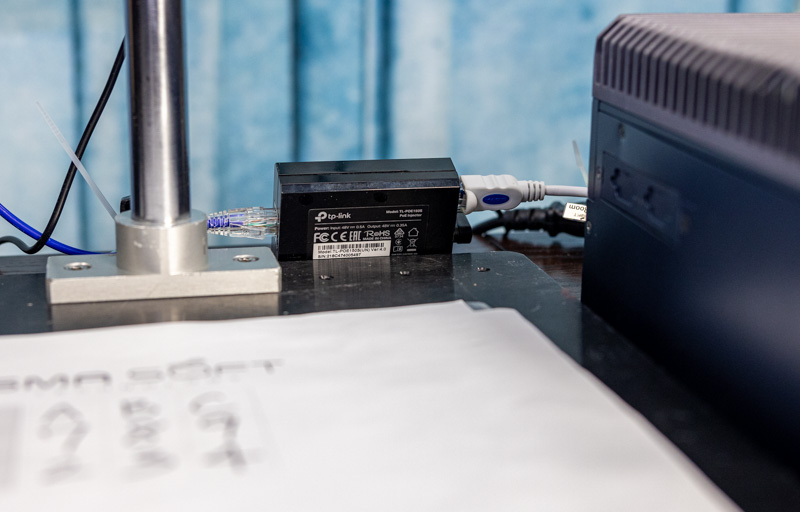
The Smasoft software also used the camera. This would normally be mounted on a production line, but in our case, the IP camera is being mounted on a test rig so we can photograph it.
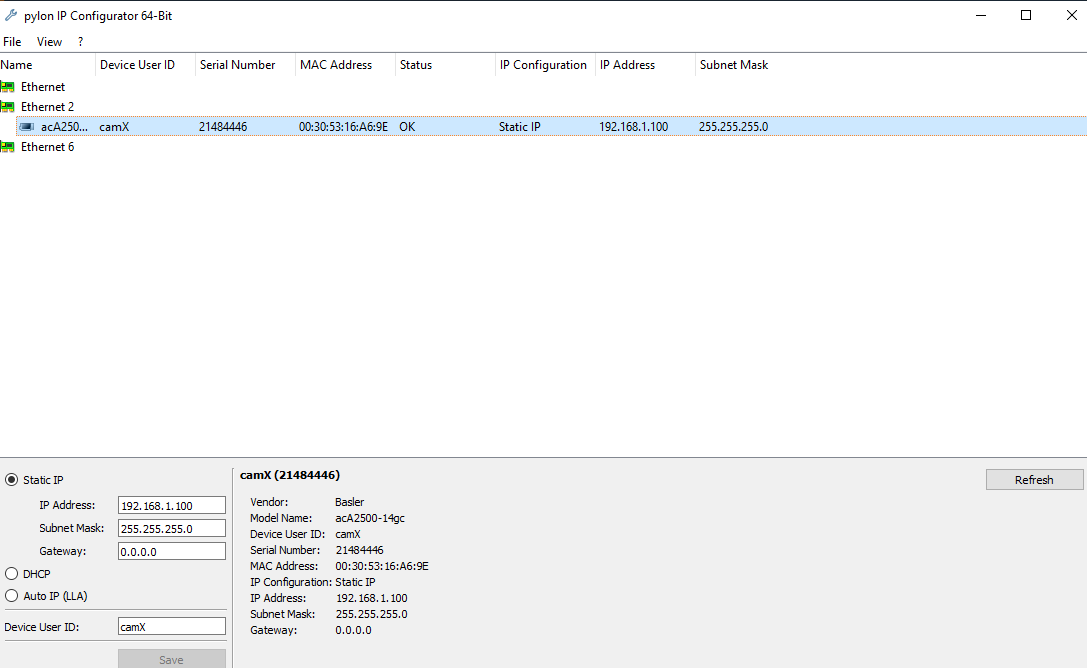
Below the camera, we have a ring light to get enough light for the camera.
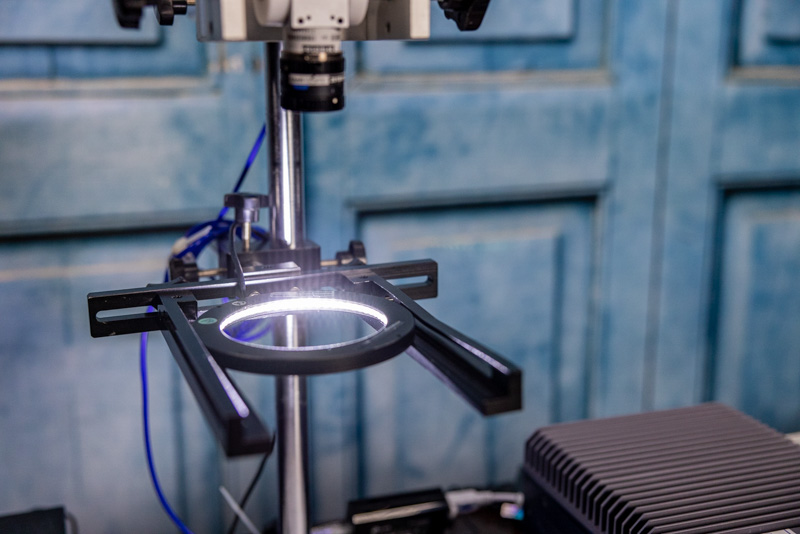
Below this, we have space where we are running our “textile line” and also have a sample OCR page that is being lit by the light and captured via the camera. The Smasoft solution then uses the setup to identify characters.
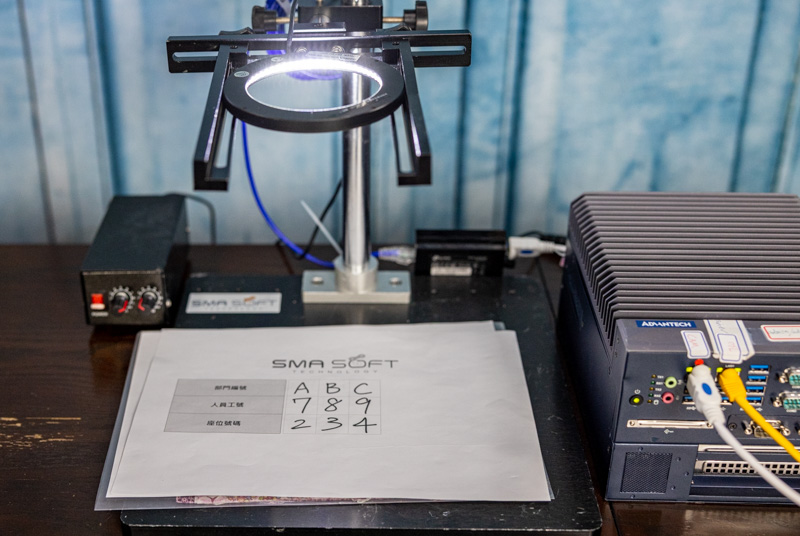
Fabric can be passed under the camera. One can imagine this is being moved past the camera on a long line, but for the demo, we only have a small piece here.
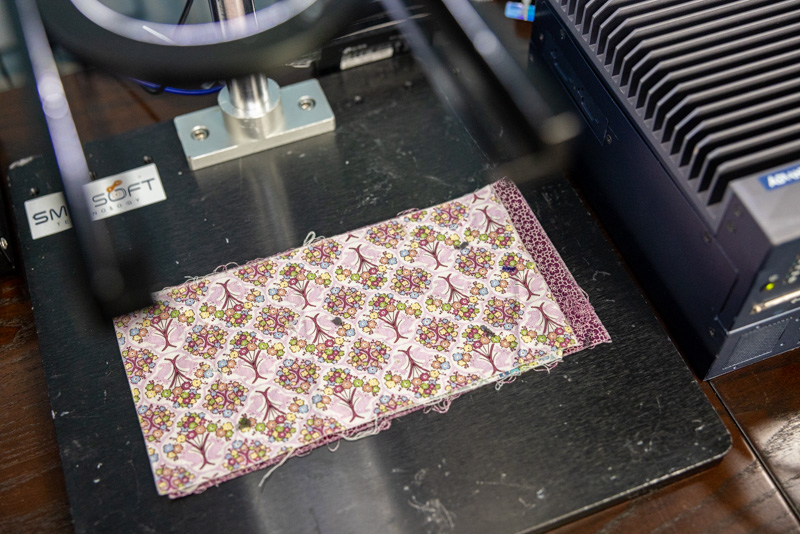
The Smasoft solution can identify a defect in the fabric, or a specific set of text from the OCR demo, and then perform actions on the line to tag what is going across.
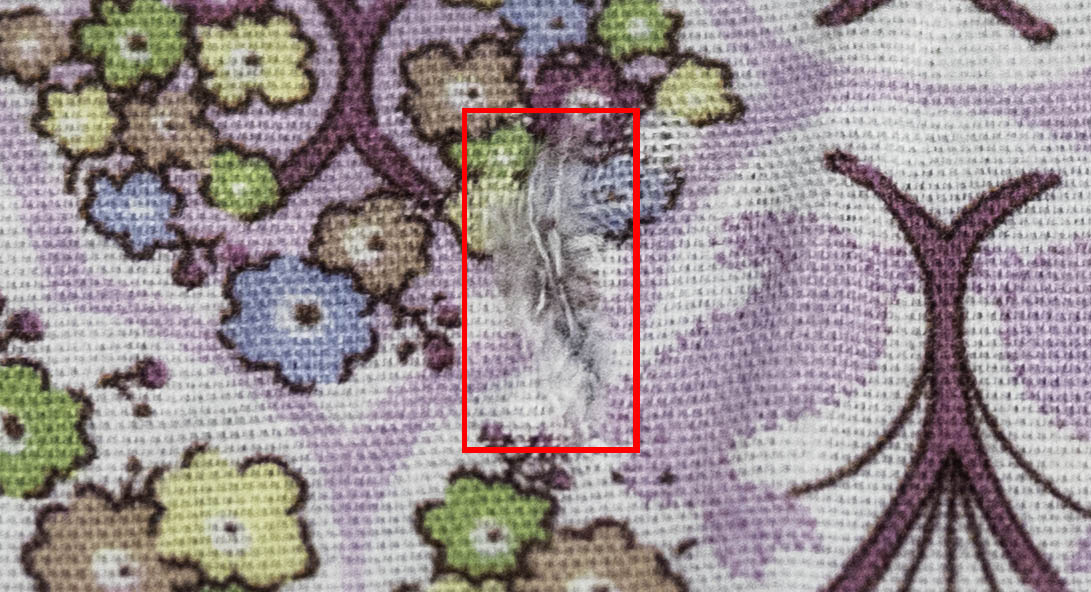
An example of how this tagging is used is to trigger automation tools. Perhaps to pick the defective part off of a line. One item we did not have was a robot arm. Luckily, Smasoft had an emulator for the robot arm that may be doing picks based on the OCR/ image recognition.
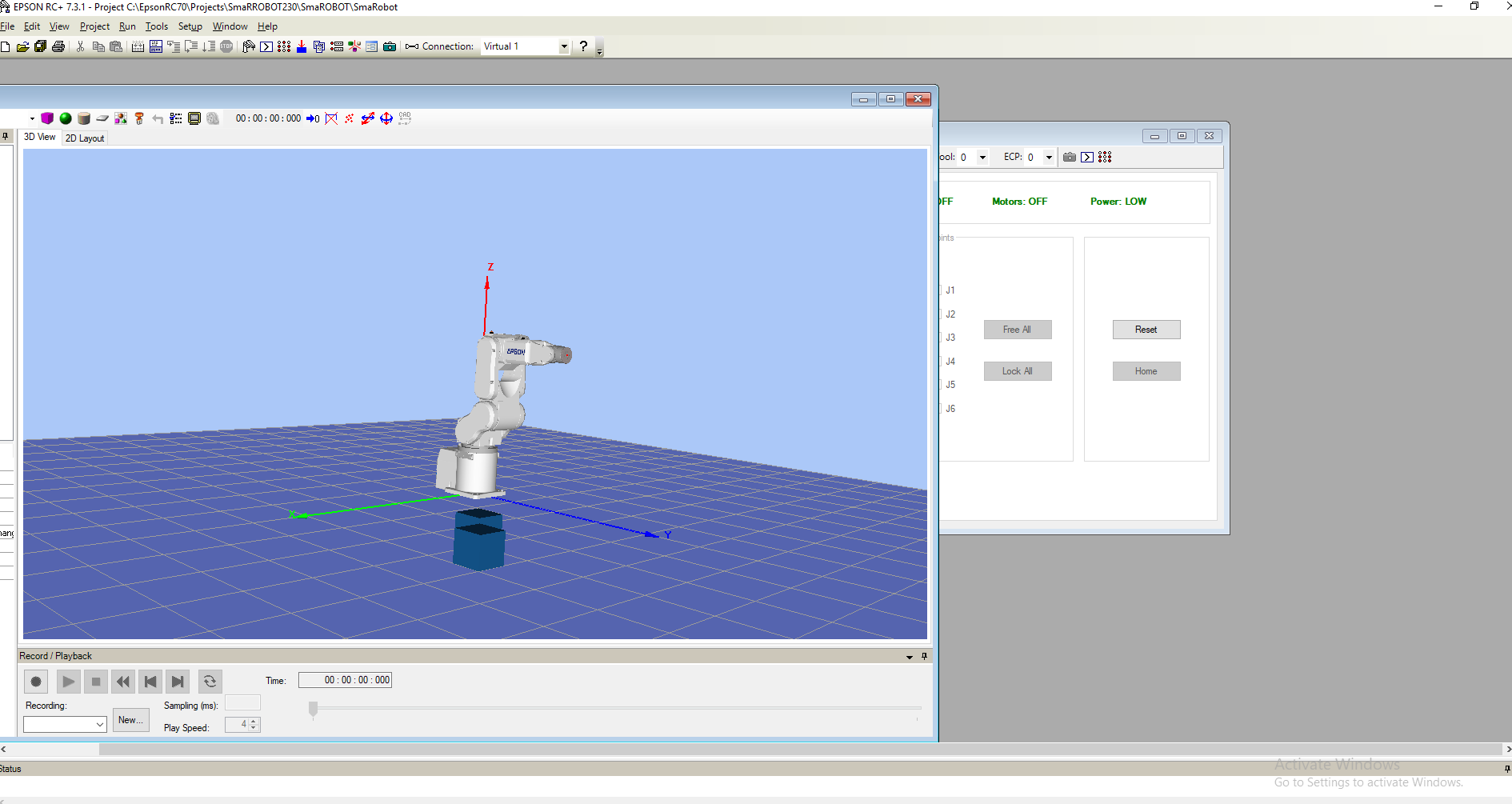
Overall, this is a fairly cool solution. Hopefully, this helps you visualize what a more end-to-end solution looks like versus just looking at a box. We know a lot of our readers want to see these systems in action. Unfortunately, we do not have a full factory, but we can set up a small textile mill. As one can imagine, the Smasoft folks have solutions for different industries that are based on the Advantech compute platforms like the MIC-730AI we see here.
Advantech MIC-730AI Power Consumption and Noise
Just as a quick note here, on 120V AC power we saw up to 30W of power consumption in our demo. NVIDIA’s Jetson line has configurable TDP so one can lower the power consumption at the expense of some performance. Although 30W was the maximum, we saw idle closer to 15W.
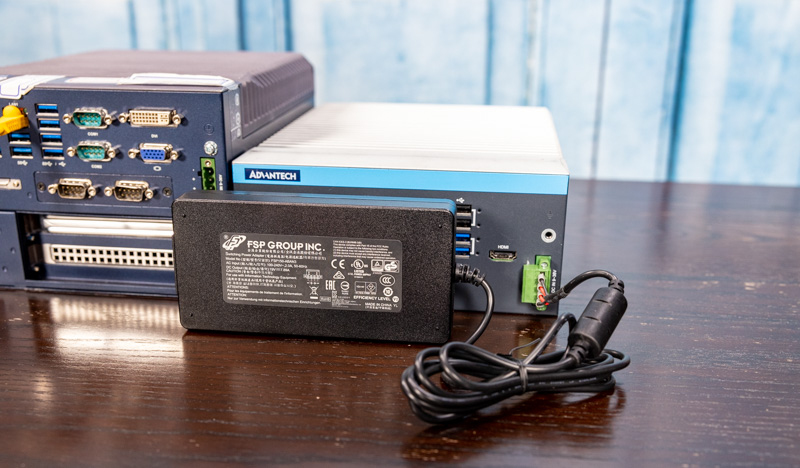
On the noise front, this unit was very quiet. We had a passively cooled chassis with a passively cooled FSP external AC adapter. In a 24dba ambient environment, we could not register even a 1dba increase from coil whine on our trusty Extech sound meter so we are going to call this silent for our purposes.
Final Words
Overall, this was a fun solution to take a look at. We wanted to give a better sense of not just the physical solution, but also how it is used in a broader setup. Indeed, the NVIDIA Jetson AGX Xavier platform is popular, and going beyond the developer kit to something that can be deployed.
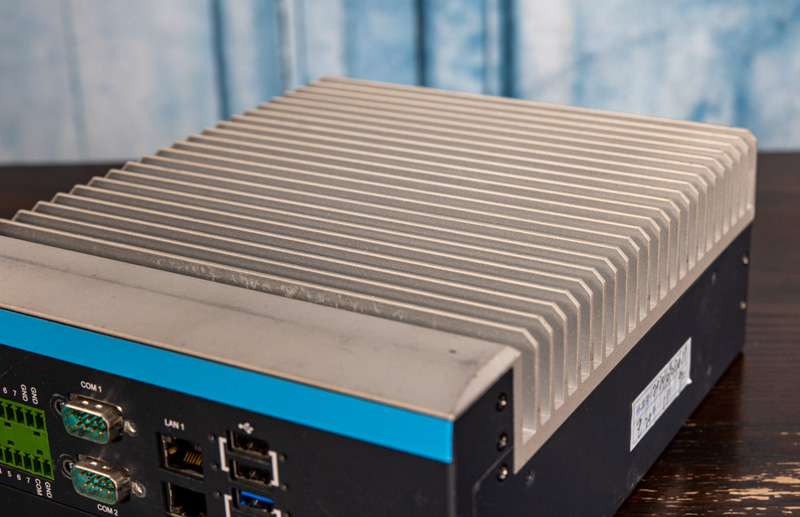
We are at a time when there is an intense focus on the edge and specifically taking the AI models that have been trained in data centers and putting them to use. AI has gone from a curiosity to being deployed every day. That is really the market for the MIC-730AI.
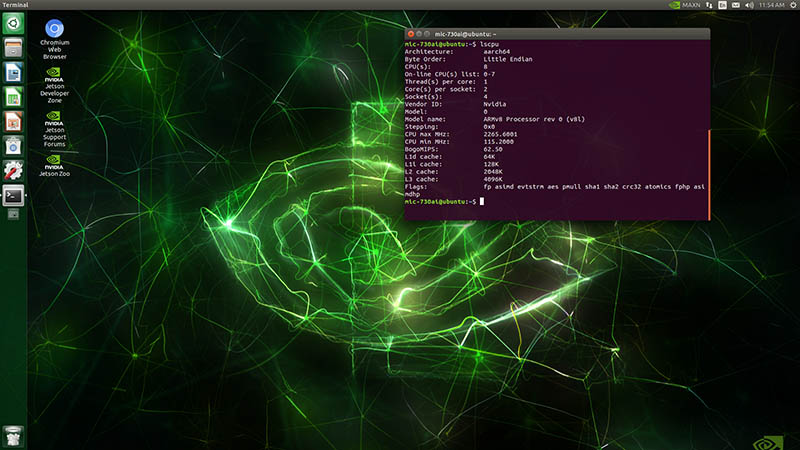
Overall, this is a very cool solution. Having a fanless embedded platform that is designed for a wide range of environments means that one can bring GPU accelerated computing to the edge.




I like the demo but please do a video next time
Is it normal for Jetson SoCs to idle at a full 50% of peak power; or is this one of those cases where power management on the surrounding board is either quite conservative(presumably to meeting industrial durability requirements) or simply not as polished as in systems where battery life is absolutely critical; or where the CPU vendor has been prodding the OEMs to build platforms that flatter their products as much as possible?
Given that it’s probably not intended to be idle if you’ve allocated the correct number I don’t imagine it’s a dealbreaker; but I’m used to much larger swings between idle and worst-case.
Please continue rating noise levels on all future reviews. (Some offices are noise sensitive, as well as some home power users may have demanding significant others and/or sensitive hearing themselves.)
One of the things I didn’t like about the cuda rt of my Jetson nano during inference is that it took about 1000 cycles for it to warm up, and then I got about 11 fps inference.
While a small Oak ai cam with Intel openvino hardware connected to an rpi did 30 fps.
Nano costs 100 eur, rpi+Oak 200 eur but you also get a 4k usb cam more fps.